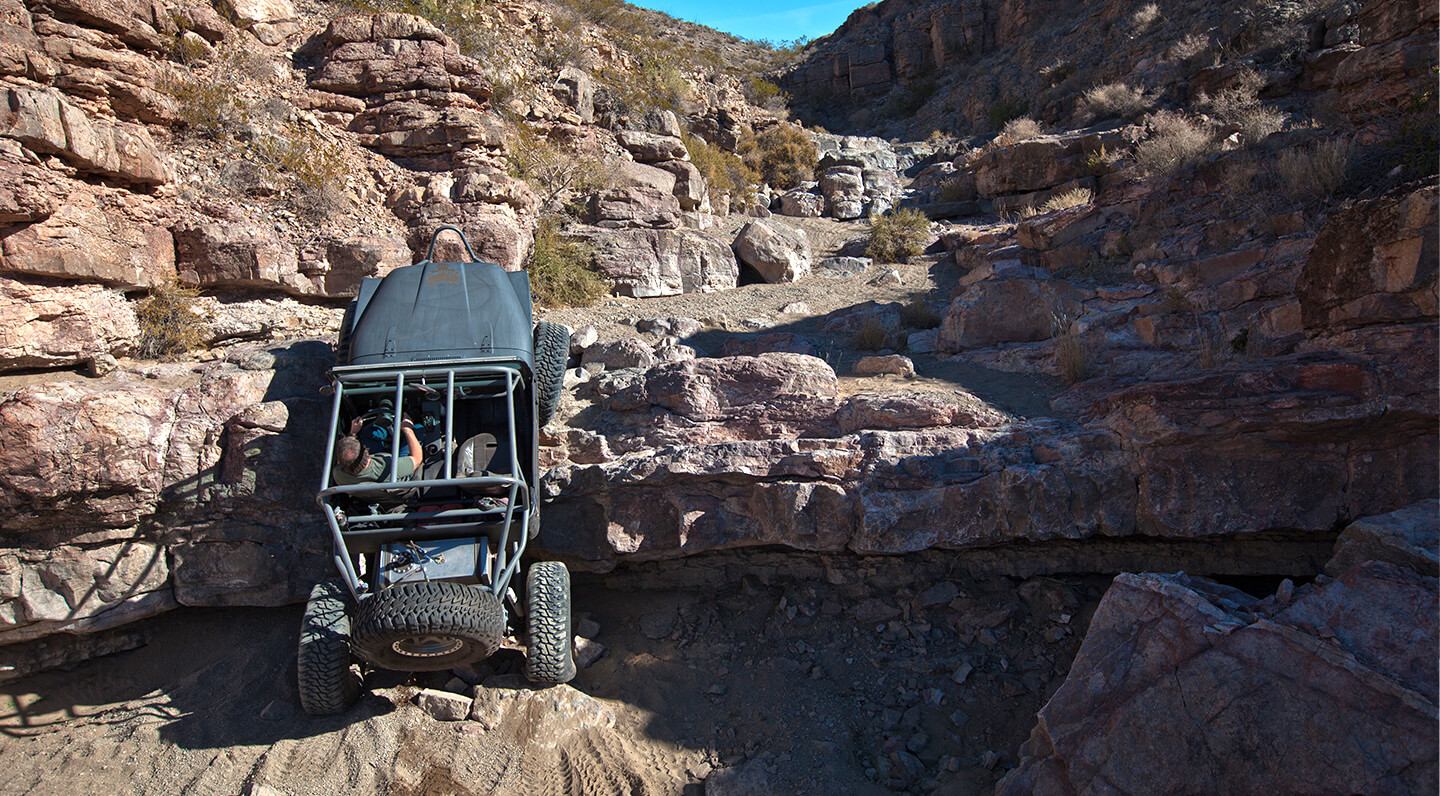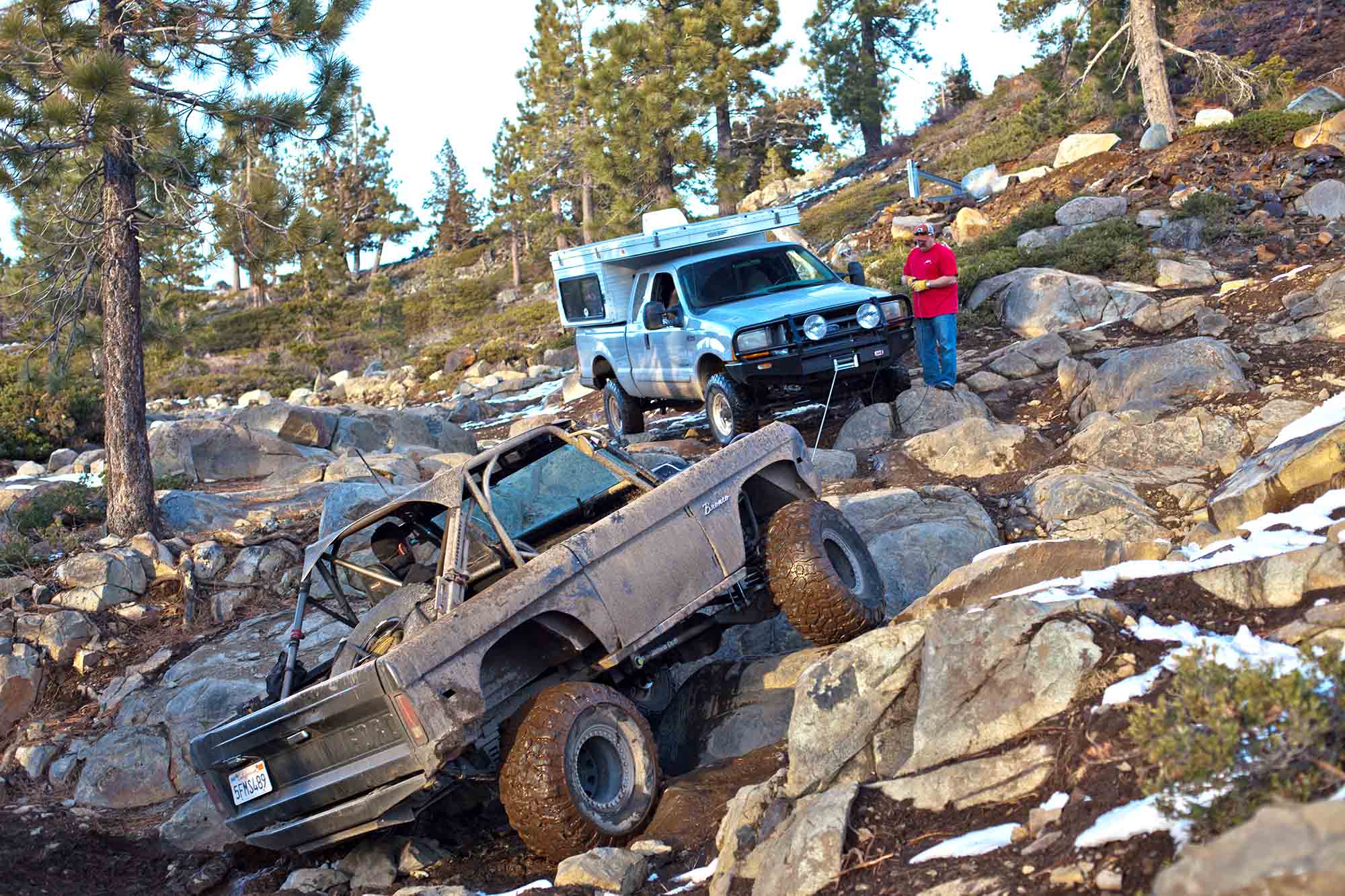
Photography: Harry Wagner
If you go off-road, you are going to get stuck. It is not a matter of if, but when, and it doesn’t matter if your terrain of choice is rocks, mud, snow, or sand. Front and rear recovery points and a good snatch strap should be your first purchases before you go off-road. They can get you out of many situations if there is another vehicle that can pull you out of your predicament. Still, a strap is no substitute for a winch.
The more technical the terrain you traverse, the more a winch will benefit you. If you are traveling down more than dirt roads, you are probably wondering if you need a winch on the front of your vehicle. Locking differentials, a flexy suspension, and low gearing can get you further down the trail. If anything, they make you more likely to encounter a situation where a winch is needed, not. And, unlike suspension and differentials, you can easily transfer your winch to your next project vehicle.
If you are wondering if you really need a winch, you have come to the right place. A winch has some significant advantages over just carrying a strap. Some might be obvious, while others you might not have thought of. Here are our reasons why you should consider adding a winch to the front of your vehicle.

In technical terrain like this, a winch is always going to be a better option than a strap. A winch can slowly pull the vehicle over obstacles instead of yanking it like with a strap. It offers a lot more control and a slow, steady pace that is perfect for situations like this.
You Get Stuck
Well, duh. This is the most obvious reason for using a winch. If you are starting to push the limits of your vehicle and getting stuck more often, it is probably time to start looking into a winch. As you take on rougher and more challenging terrain, there are going to be times when a yank with a tow strap from another vehicle just isn’t going to cut it. There may even be times when trying to pull your rig out with a tow strap will cause even more damage to it. And eventually, you will get stuck bad enough where only the pulling power of a winch will set you free. If you are just cruising around dirt roads or out exploring, chances are you don’t need a winch. Once you start pushing beyond that, its time to start shopping.
Slow And Steady
In sharp contrast to a strap, a winch can provide very controlled motion in small increments. Yanking a vehicle out with a strap can sometimes be a violent process with lots of throttle and multiple pulls required. In flatter or more forgiving terrain (like snow and sand) this usually isn’t an issue. On rocky or rough trails, trying to recover a vehicle with a tow strap can cause a lot of damage. A vehicle can easily be dragged into or over rocks, a tree stump, or much worse. The rig doing the pulling might not have room to maneuver either. Compared to a strap, a winch is a precision instrument. It can slowly pull out a stuck vehicle allowing the operator a lot more control over the process. This slow and steady approach is often the only way to extract a 4×4 in tougher terrain.

Going Hardcore
On more hardcore trails, a winch is often the only way to scale some obstacles. Big ledges, drop-offs, stair steps, and huge climbs can sometimes only be traversed with the aid of a winch. Having a winch on your vehicle also gives you the luxury of not having to beat on it to get up an obstacle. You can give it a few tries and then, if you can’t make it, winch yourself up and over. Sure, some people might feel some shame in doing this, but we would rather keep our parts (and our wallet) intact. Without a winch, the only other option is to mash the throttle and pray for the best. Often the breaking of parts or crunching of sheet metal is the result. This is why a winch is often required equipment on a lot of harder trails.
Reaching Out
Even the longest straps are only 30 feet long, while most winches come with 100 feet of cable on them. This extra length might not sound like much, but it can make a big difference during difficult recoveries. It allows the recovery vehicle to stay on solid ground rather than enter potentially hazardous situations in mud, snow, or sand. This can be the difference between the rig that was supposed to rescue you getting stuck as well or it winching you to freedom. With almost 70 extra feet of cable to deal with, there are a lot more options for vehicle positioning and recovery.

Rolling Solo
If you wheel alone, a winch can make the difference between driving home or walking home. Sometimes stacking rocks or digging out of the sand or snow just won’t cut it, and even when they will they take considerably more time than winching. If you do go alone, take a tree saver strap with you so you can connect your winch line to a tree. Place the strap low along the trunk of the tree, and never wrap the cable around the tree and attach it back to itself. You will kink your cable and kill the tree in the process.
If you spend time in the dunes or the desert alone, consider bringing a Smittybilt Winch Anchor Support Platform (WASP). While bulky and heavy, there is no substitute for these land anchors when you are stuck alone with nothing to connect your winch to. We have heard stories of people burying their spare tire in the sand and using it for an anchor, but this is a long, arduous process when the sun is beating down on you in the desert.
Rollover Recovery
Vehicles rarely roll on flat ground. If you need to recover another rig after a rollover, it is probably in a less than ideal position. This can make righting a rolled vehicle one of the most challenging recoveries out there. Not having a winch and having to rely only on a strap makes it even worse. Often, a vehicle will have to be pulled back uphill to get it back on its feet. With a strap this can be a messy or even impossible process. A winch provides the slow and controlled inputs that are often needed in these sticky situations. And, it also has the power required to drag a vehicle back onto its wheels.

We wouldn’t expect the owner of a stock Jeep Patriot to have a winch on his vehicle, but he absolutely needed one to recover him from this narrow, sketchy levee. The vehicle had to be moved in small segments and a road essentially built under the tires on the side of the levee. The entire bottom of the Patriot was resting on a berm, so a snatch block was used to double the pulling power on the Warn M8000 winch on the front of the Toyota. This also reduces the line speed by half, which slows down the process. This can actually be a benefit for technical extractions such as this. Snatch blocks can also be useful to change the direction of the pull, something you cannot do with a strap.
Other Uses
A winch is also handy when moving an inoperable vehicle, such as after a rollover or when you are bringing your new, non-running project home on the trailer. If you buy a fancy new winch for your 4×4, consider moving your older, less expensive winch onto the front of your trailer for pulling duties. If you only have one winch though, we recommend mounting it on your 4×4. You can pull up next to the tow rig facing back towards the trailer and pull a dead vehicle on to the trailer. Consider jack knifing the tow rig and trailer to keep the pull as straight as possible. This might not sound complicated, but it isn’t if you take your time. Plus it beats trying to push a dead vehicle onto a trailer with your buddies. Just remember to have someone in the vehicle to hit the brakes once it is up on the trailer.
Changing The Angle
Another thing a winch can do that a strap can’t is pull at extreme angles. With a snatch block, a winch can be used at a 90-degree (or even steeper) angle. In some situations, there will be no way to get directly behind the vehicle you are trying to recover. This makes it impossible to deploy a strap and the only option being to winch at an angle. While it might sound rare, it does happen. We saw this done when a vehicle slid off a muddy, narrow forest road and down a steep embankment. Thankfully, trees kept it from rolling over and the occupants were not hurt. The only way to get it back onto the road was to use a tree strap around above the road, a pulley, and a winch. Due to the severe angle, the Jeep was at compared to the road, there was just no way to use a strap. Without a winch, that Jeep would probably still be there.



2